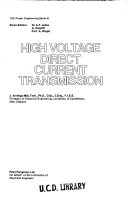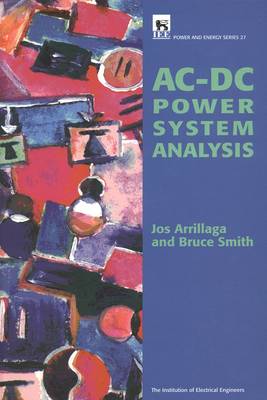Energy Engineering
3 total works
Since the first edition of this book in 1983, HVDC technology has continued to expand and few power systems can now escape its influence. This thoroughly revised text develops the coverage in the first edition, describing the variety of reasons justifying the use of DC transmission as well as the basic concepts and techniques involved in the AC-DC and DC-AC conversion processes. It has been fully updated and enlarged to include descriptions of the widening applications of DC, the current state-of-the-art thyristors and other semiconductor devices, and the new developments that continue to make HVDC a competitive technology.
The book should be of interest to practising engineers and researchers involved in the power industry. It will also be of assistance to lecturers and students in the power systems and power electronics disciplines.
Power Systems Electromagnetic Transients Simulation
by Neville Watson and Jos Arrillaga
Accurate knowledge of electromagnetic power system transients is crucial to the operation of an economic, efficient and environmentally friendly power systems network without compromising on the reliability and quality of electrical power supply. Electromagnetic transient (EMT) simulation has therefore become a universal tool for the analysis of power system electromagnetic transients in the range of nanoseconds to seconds, and is the backbone for the design and planning of power systems, as well as for the investigation of problems.
In this fully revised and updated new edition of this classic book, a thorough review of EMT simulation is provided, with many simple examples included to clarify difficult concepts. Topics covered include analysis of continuous and discrete systems; state variable analysis; numerical integrator substitution; the root-matching method; transmission lines and cables; transformers and rotating plant; control and protection; power electronic systems; frequency-dependent network equivalents; steady-state assessment; mixed time-frame simulation; transient simulation in real-time; and applications.
With the expansion of HV DC transmission throughout the world, and the increasing numbers of international interconnections, few power systems can continue to escape the effect of this technology in their planning and operation. The primary subject of this book is the incorporation of AC-DC converters and DC transmission in power system analysis. However, the concepts and methods described are also applicable to the FACTS (flexible AC transmission systems) technology.
As well as conventional power flows, faults and stability, the book describes the simulation of power system steady-state waveform distortion and transient behaviour. The modelling of power electronic devices in electromagnetic transient programs is given prominence, as these programs have become the 'workhorse' of power system design.
This graduate-level text should be of interest to practising engineers and researchers involved in the solution of modern power system problems. It will also be a useful reference for advanced electrical engine ering students.


